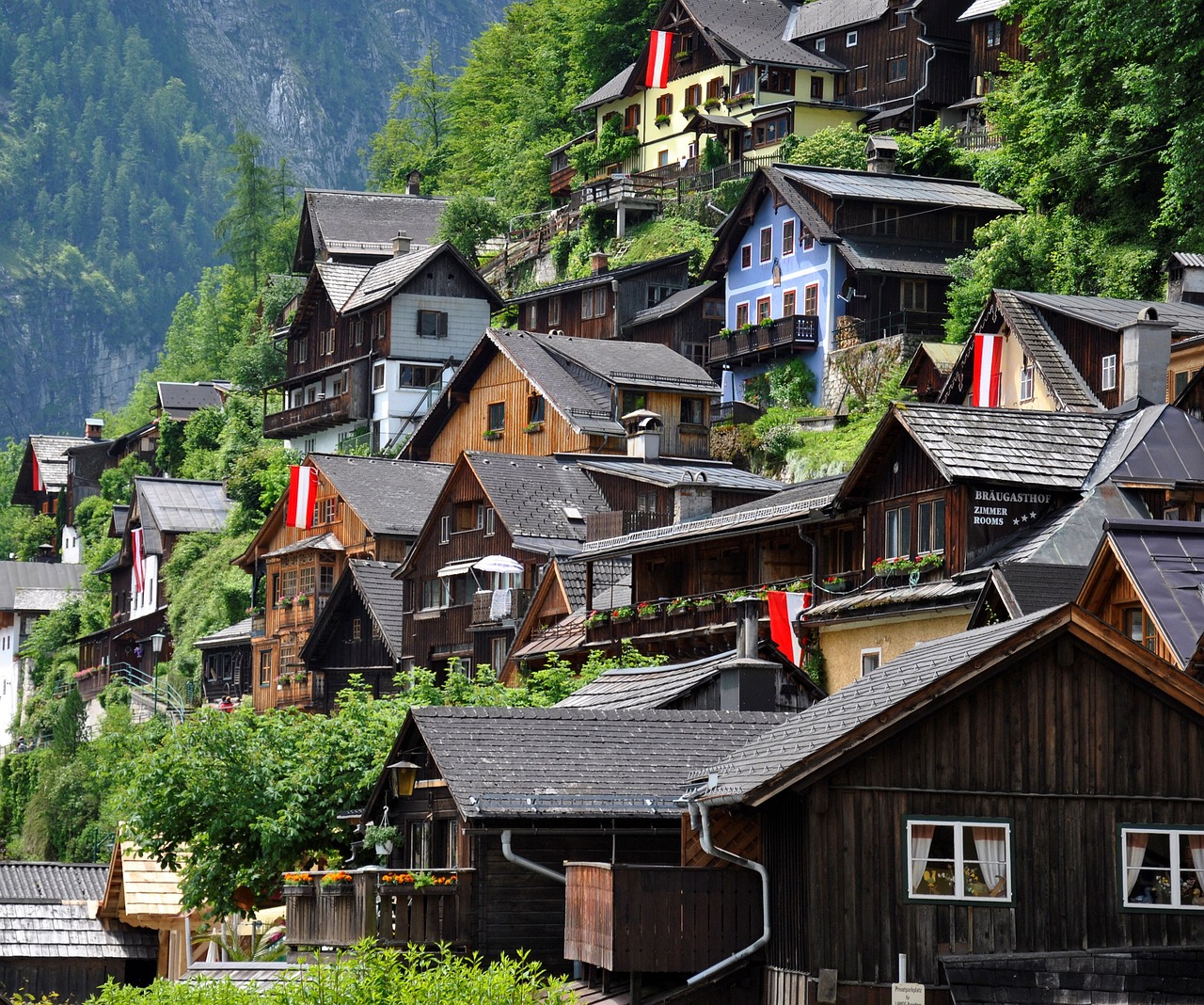The Importance of Historical Research in Heritage Conservation
Historical research is the cornerstone of heritage conservation, serving as a vital tool in understanding and preserving cultural sites that hold immense significance in our collective history. Through meticulous investigation and analysis, researchers unearth the stories, traditions, and values embedded in these heritage sites, shedding light on the rich tapestry of our past.
By delving into the historical context of these sites, researchers can trace the evolution of communities, civilizations, and cultural practices, providing invaluable insights that guide conservation efforts. This deep dive into the past not only helps in safeguarding the cultural identity of a place but also fosters a sense of pride and connection among its inhabitants.
Moreover, historical research plays a pivotal role in guiding restoration projects, ensuring that the preservation and reconstruction efforts are faithful to the original design and materials used in these heritage sites. This attention to detail is essential in maintaining the authenticity and integrity of these cultural treasures for future generations to appreciate and cherish.
One of the key benefits of historical research in heritage conservation is its ability to legitimize preservation efforts. By unearthing historical evidence that underscores the importance of a site, researchers garner support from various stakeholders, policymakers, and the public, rallying them behind the cause of protecting these invaluable cultural assets.
Furthermore, historical research adds a layer of significance to heritage sites, making them not only repositories of the past but also vibrant hubs for tourism and economic development. By attracting visitors keen on exploring the history and heritage of a place, these sites become catalysts for local economies, creating job opportunities and fostering the growth of cultural tourism industries.
Despite its undeniable importance, historical research in heritage conservation faces several challenges, including limited funding, restricted access to archival materials, and the necessity for interdisciplinary collaboration to ensure comprehensive and accurate findings. Overcoming these obstacles requires a concerted effort from researchers, policymakers, and the community at large.
Advancements in technology have revolutionized historical research, offering innovative tools such as 3D scanning, remote sensing, and digital mapping that enhance data collection, analysis, and visualization of heritage sites. These technological breakthroughs have significantly streamlined the research process, enabling researchers to delve deeper into the historical significance of these sites.
Engaging local communities in historical research is crucial for fostering a sense of ownership and stewardship over heritage sites. By involving community members in the conservation process, researchers empower them to become active participants in preserving their cultural heritage and passing down valuable knowledge to future generations.
Lastly, the educational significance of historical research cannot be overstated. Beyond preserving tangible heritage, historical research serves as a powerful educational tool, enlightening people about their shared history, promoting cultural diversity, nurturing empathy, and instilling a profound appreciation for the importance of heritage conservation.

Preservation of Cultural Identity
Preservation of Cultural Identity is a fundamental aspect of heritage conservation that goes beyond physical structures. Historical research plays a pivotal role in uncovering the rich tapestry of stories, traditions, and values embedded in cultural sites. These narratives not only connect us to our past but also serve as a mirror reflecting the cultural identity of communities. Imagine heritage sites as time capsules, preserving the essence of generations gone by, waiting to be explored and understood.
Through historical research, we can delve into the depths of history, unraveling the threads that weave together the unique fabric of each community's identity. It's akin to piecing together a puzzle, where every artifact, every document, and every oral tradition adds a new layer of understanding. This process not only fosters a sense of pride and belonging among the people but also strengthens the bonds that tie them to their cultural roots.
Moreover, the preservation of cultural identity is not just about safeguarding the physical remnants of the past; it's about honoring the intangible heritage that defines who we are as a society. By delving into the historical significance of heritage sites, we can appreciate the diverse cultural expressions that have shaped our collective identity. It's like embarking on a journey through time, where each step reveals a new chapter in the story of humanity.

Guiding Restoration Projects
Historical research plays a vital role in guiding restoration projects aimed at preserving and restoring heritage sites to their former glory. By delving into the past, researchers can unearth valuable insights that inform the restoration process, ensuring that the authenticity and historical significance of these sites are preserved for future generations.
One of the key aspects of historical research in guiding restoration projects is the meticulous examination of architectural elements and materials used in the original construction of heritage sites. By studying historical records, photographs, and artifacts, conservationists can accurately recreate and restore these sites, maintaining their integrity and cultural significance.
Moreover, historical research helps in understanding the evolution of heritage sites over time, allowing conservationists to make informed decisions about which elements to preserve, repair, or reconstruct. This knowledge is crucial in ensuring that restoration efforts align with the site's historical context and significance, creating an authentic and immersive experience for visitors.
Through detailed historical research, conservationists can also uncover hidden stories and narratives associated with heritage sites, shedding light on their cultural, social, and historical importance. By integrating these narratives into the restoration process, researchers can breathe new life into these sites, making them more engaging and educational for visitors.

Legitimizing Preservation Efforts
Historical research plays a crucial role in heritage conservation by providing essential insights into the significance of cultural sites, guiding preservation efforts, and enhancing public understanding of the past.
Historical research helps in preserving the cultural identity of communities by uncovering the stories, traditions, and values associated with heritage sites, fostering a sense of pride and connection among the people.
Through historical research, conservationists can accurately reconstruct and restore heritage sites, ensuring that the architectural elements and materials used are authentic and in line with the site's historical significance.
By providing historical evidence of a site's importance, research legitimizes preservation efforts, garnering support from stakeholders, policymakers, and the public to safeguard these cultural treasures for future generations.
Historical research adds value to heritage sites by making them more attractive to tourists, thereby boosting local economies through increased visitor numbers, job creation, and the growth of cultural tourism industries.
Despite its importance, historical research in heritage conservation faces challenges such as limited funding, access to archival materials, and the need for interdisciplinary collaboration to ensure comprehensive and accurate findings.
Advancements in technology, such as 3D scanning, remote sensing, and digital mapping, have revolutionized historical research, allowing for more efficient data collection, analysis, and visualization of heritage sites.
Involving local communities in historical research fosters a sense of ownership and stewardship over heritage sites, empowering them to actively participate in conservation efforts and pass down cultural knowledge to future generations.
Historical research not only preserves tangible heritage but also educates people about their shared history, promoting cultural diversity, empathy, and a deeper appreciation for the importance of heritage conservation.
Legitimizing preservation efforts through historical research is vital in gaining support for the protection of cultural heritage. By presenting documented evidence of a site's historical, cultural, or architectural significance, researchers can rally stakeholders, policymakers, and the public behind preservation initiatives. This validation helps secure funding, resources, and legal protection for heritage sites, ensuring their longevity for future generations to appreciate and learn from.

Enhancing Tourism and Economic Development
Historical research plays a vital role in enhancing tourism and driving economic development in regions rich in cultural heritage. By delving into the past and uncovering the stories behind heritage sites, researchers add layers of intrigue and value to these locations, making them more appealing to both domestic and international tourists. The authentic restoration and preservation of historical sites, guided by thorough research, create immersive experiences for visitors, allowing them to step back in time and connect with the cultural roots of a place.
Moreover, the promotion of heritage sites through historical research contributes significantly to economic growth by attracting a steady flow of tourists. Increased visitor numbers not only generate revenue for local businesses but also stimulate job creation in the hospitality, tourism, and service sectors. As a result, heritage conservation efforts fueled by historical research become key drivers of sustainable economic development, transforming historical sites into vibrant hubs of cultural tourism.

Challenges in Historical Research
Historical research plays a crucial role in heritage conservation by providing essential insights into the significance of cultural sites, guiding preservation efforts, and enhancing public understanding of the past.
Historical research helps in preserving the cultural identity of communities by uncovering the stories, traditions, and values associated with heritage sites, fostering a sense of pride and connection among the people.
Through historical research, conservationists can accurately reconstruct and restore heritage sites, ensuring that the architectural elements and materials used are authentic and in line with the site's historical significance.
By providing historical evidence of a site's importance, research legitimizes preservation efforts, garnering support from stakeholders, policymakers, and the public to safeguard these cultural treasures for future generations.
Historical research adds value to heritage sites by making them more attractive to tourists, thereby boosting local economies through increased visitor numbers, job creation, and the growth of cultural tourism industries.
Despite its importance, historical research in heritage conservation faces challenges such as limited funding, access to archival materials, and the need for interdisciplinary collaboration to ensure comprehensive and accurate findings. These obstacles often require creative solutions and innovative approaches to overcome.
Advancements in technology, such as 3D scanning, remote sensing, and digital mapping, have revolutionized historical research, allowing for more efficient data collection, analysis, and visualization of heritage sites.
Involving local communities in historical research fosters a sense of ownership and stewardship over heritage sites, empowering them to actively participate in conservation efforts and pass down cultural knowledge to future generations.
Historical research not only preserves tangible heritage but also educates people about their shared history, promoting cultural diversity, empathy, and a deeper appreciation for the importance of heritage conservation.

Technology and Innovation in Research
Technology has significantly transformed the landscape of historical research in heritage conservation. Innovations such as 3D scanning, remote sensing, and digital mapping have revolutionized the way experts study and document cultural sites. These advanced tools allow for more precise data collection, detailed analysis, and immersive visualization of heritage sites, providing researchers with a deeper understanding of their historical significance.
3D scanning technology, for example, enables conservationists to create detailed digital replicas of heritage structures, capturing intricate details that may be difficult to observe with the naked eye. This technology not only aids in preservation efforts by documenting the current state of sites but also serves as a valuable resource for monitoring changes over time and planning restoration projects.
Remote sensing techniques, such as LiDAR (Light Detection and Ranging), have proven instrumental in uncovering hidden archaeological features and mapping expansive landscapes with precision. By utilizing aerial surveys and satellite imagery, researchers can identify subtle variations in topography that may indicate the presence of buried artifacts or ancient structures, offering new insights into the history of a site.
Digital mapping tools have streamlined the process of documenting and analyzing heritage sites, allowing researchers to create interactive maps, virtual tours, and detailed reconstructions of historical environments. These digital representations not only facilitate scholarly research but also enhance public engagement by offering immersive experiences that bring the past to life for audiences around the world.
Overall, the integration of technology and innovation in historical research has opened up new possibilities for exploring and safeguarding cultural heritage. By harnessing the power of digital tools, researchers can uncover hidden stories, preserve fragile artifacts, and ensure that the legacy of past civilizations is preserved for future generations to appreciate and learn from.

Engaging Local Communities
Engaging local communities in historical research is a vital aspect of heritage conservation that fosters a sense of ownership and stewardship over cultural sites. By involving residents in the preservation efforts, a deeper connection to the heritage is established, leading to increased community pride and responsibility.
One effective way to engage local communities is through educational programs and workshops that highlight the historical significance of the sites. These initiatives not only educate residents about their heritage but also empower them to actively participate in the conservation process.
Furthermore, organizing community events and cultural festivals at heritage sites can create a sense of inclusivity and belonging among the residents. By celebrating the shared history and traditions, local communities are encouraged to take pride in their cultural heritage and become advocates for its preservation.
Collaborating with local schools and universities to incorporate historical research into the curriculum can also be a powerful tool in engaging the younger generation. By instilling a sense of appreciation for heritage at a young age, future leaders and stewards of cultural sites are nurtured.
Moreover, establishing community-led conservation groups and volunteer programs allows residents to actively participate in the maintenance and protection of heritage sites. By working together towards a common goal, local communities develop a sense of camaraderie and shared responsibility for preserving their cultural legacy.

Educational Significance of Historical Research
Historical research holds immense educational significance in the realm of heritage conservation. It serves as a gateway to the past, allowing individuals to delve into the rich tapestry of history and gain a deeper understanding of their cultural roots. By studying the historical context of heritage sites, people can connect with the stories of those who came before them, fostering a sense of empathy and appreciation for the struggles and triumphs of past generations.
Furthermore, historical research not only preserves tangible heritage but also plays a crucial role in educating the public about the importance of preserving cultural landmarks. Through engaging narratives and interactive experiences, historical research brings history to life, making it more accessible and relatable to individuals of all ages. This educational aspect of historical research helps instill a sense of pride in one's heritage and encourages a collective effort to protect and celebrate cultural diversity.
Moreover, by uncovering the historical significance of heritage sites, research opens up avenues for interdisciplinary learning and collaboration. It encourages individuals to explore different facets of history, including art, architecture, sociology, and anthropology, fostering a holistic understanding of the past. This multidisciplinary approach not only enriches educational experiences but also promotes a well-rounded perspective on the complexities of heritage conservation.
Frequently Asked Questions
- What is the significance of historical research in heritage conservation?
Historical research plays a crucial role in heritage conservation by providing essential insights into the significance of cultural sites, guiding preservation efforts, and enhancing public understanding of the past.
- How does historical research help in preserving cultural identity?
Historical research helps in preserving the cultural identity of communities by uncovering the stories, traditions, and values associated with heritage sites, fostering a sense of pride and connection among the people.
- What challenges does historical research face in heritage conservation?
Despite its importance, historical research in heritage conservation faces challenges such as limited funding, access to archival materials, and the need for interdisciplinary collaboration to ensure comprehensive and accurate findings.
- How does technology contribute to historical research in heritage conservation?
Advancements in technology, such as 3D scanning, remote sensing, and digital mapping, have revolutionized historical research, allowing for more efficient data collection, analysis, and visualization of heritage sites.
- Why is engaging local communities important in historical research for heritage conservation?
Involving local communities in historical research fosters a sense of ownership and stewardship over heritage sites, empowering them to actively participate in conservation efforts and pass down cultural knowledge to future generations.
- What educational significance does historical research hold in heritage conservation?
Historical research not only preserves tangible heritage but also educates people about their shared history, promoting cultural diversity, empathy, and a deeper appreciation for the importance of heritage conservation.



















